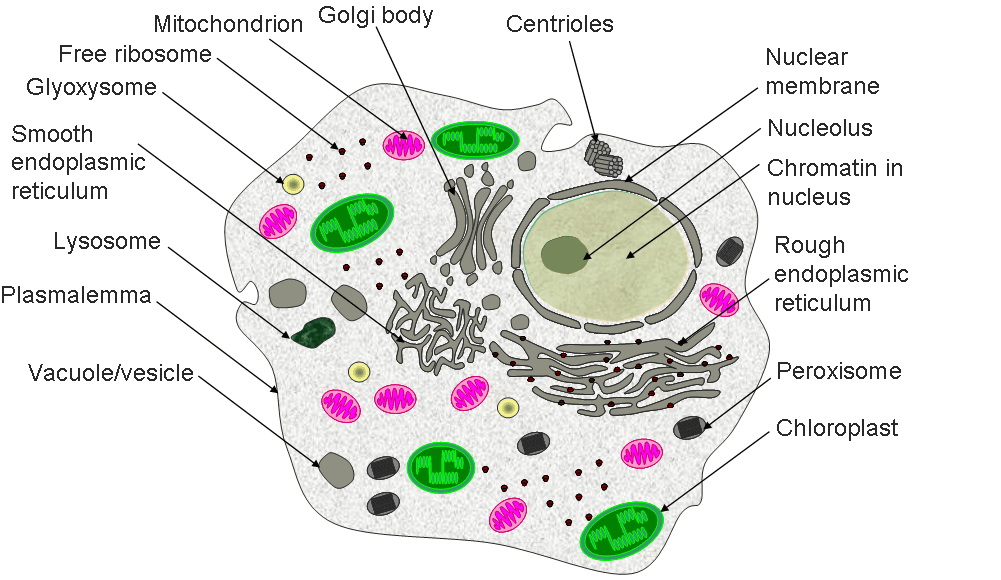
eukaryotic cell images Biological Science Picture Directory
Eukaryotic Cell Diagram Where are they Found Eukaryotic cells are located in plants, animals including humans, fungi, and protozoa. They are together classified under the kingdom Eukaryota. How did Eukaryotic Cells Evolve The first eukaryotic cells probably evolved about 2 billion years ago. The endosymbiotic theory explains their evolution.

Biology 101 Cells Owlcation
The Cytoplasm The cytoplasm comprises the contents of a cell between the plasma membrane and the nuclear envelope (a structure to be discussed shortly). It is made up of organelles suspended in the gel-like cytosol, the cytoskeleton, and various chemicals (Figure 1).
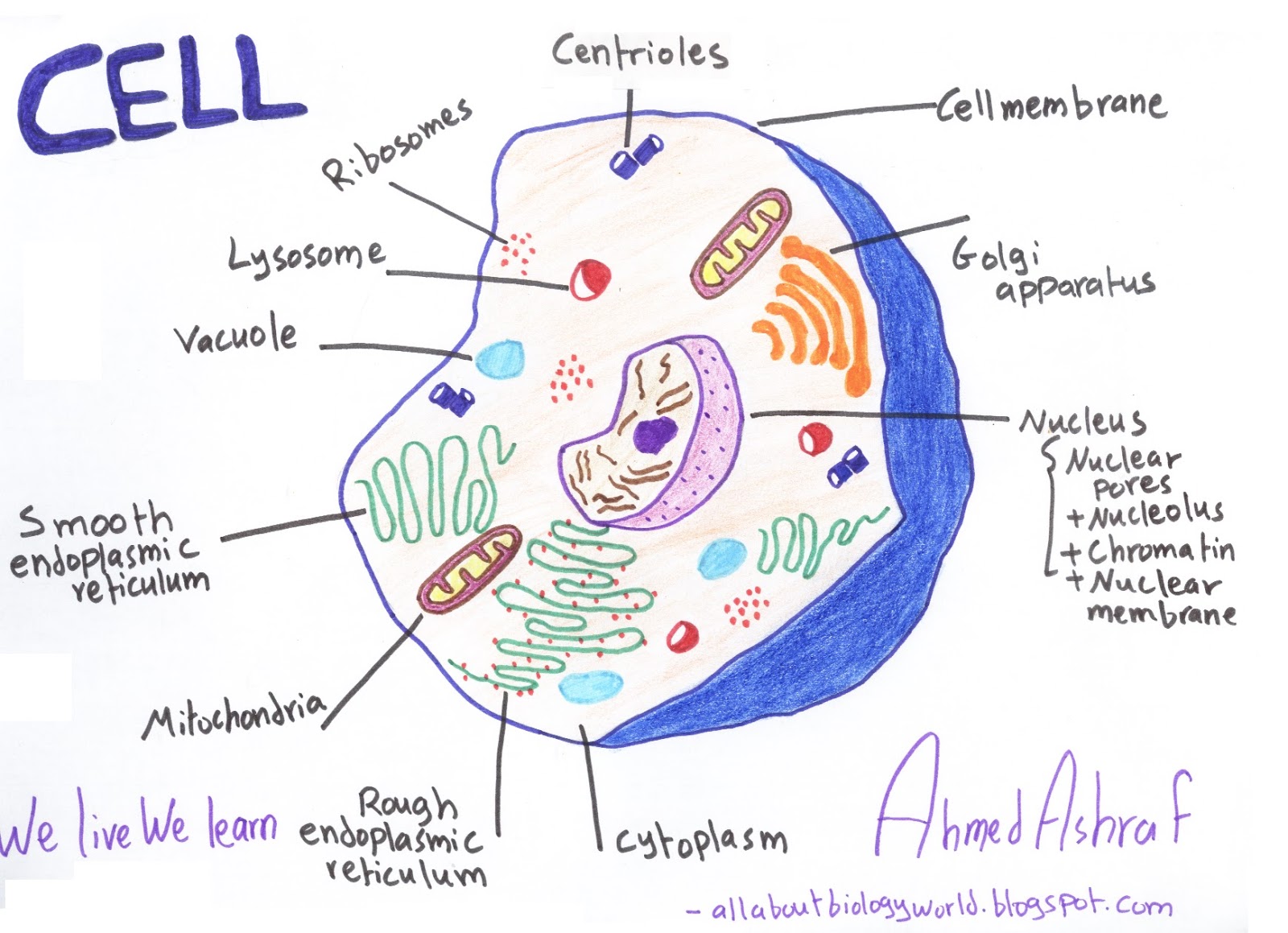
Biology Club Our cells 1 ( structure, function, division, disorder
The structure of a eukaryotic cell is highly organized and compartmentalized, with various membrane-bound organelles and structures that perform specific functions. These structures are organelles that work together to maintain the cell's functions, including growth, energy production, and response to its environment..
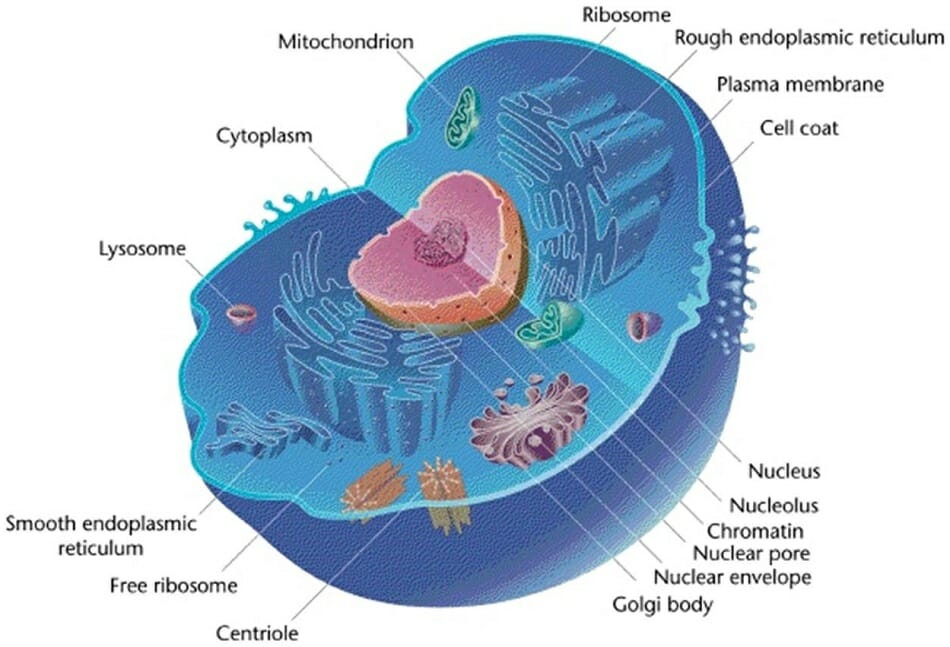
Eukaryotic Cell Definition, Characteristics, Structure and Examples
The Cytoplasm In cell biology, each eukaryotic cell is separated into two categories: the nucleus, which we just described above, and the cytoplasm, which is, well, everything else.

Diagram Of A Eukaryotic Cell Drivenheisenberg
Eukaryotic cells also contain organelles, including mitochondria (cellular energy exchangers), a Golgi apparatus (secretory device), an endoplasmic reticulum (a canal-like system of membranes within the cell), and lysosomes (digestive apparatus within many cell types).
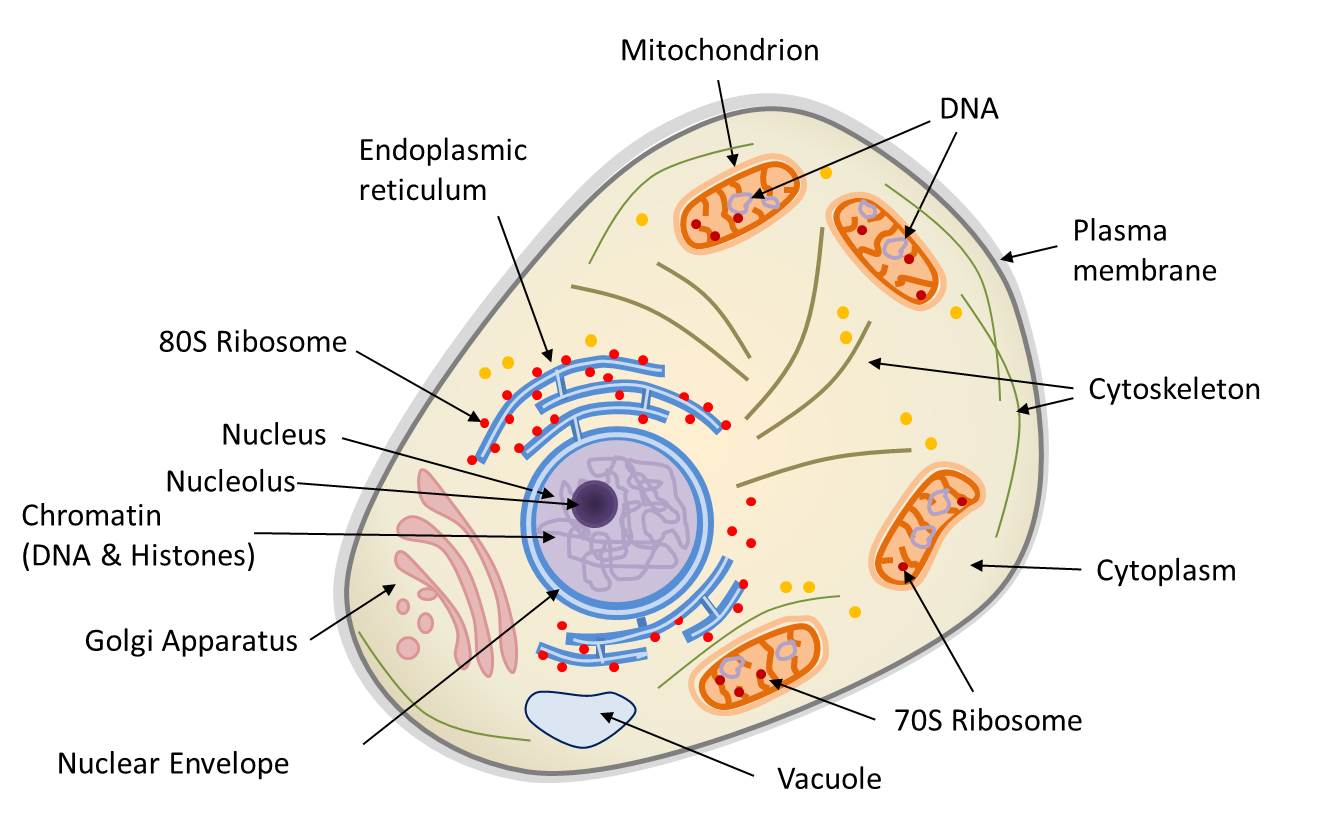
Symbiosis and evolution at the origin of the eukaryotic cell
Unlike prokaryotic cells, eukaryotic cells have: 1) a membrane-bound nucleus; 2) numerous membrane-bound organelles such as the endoplasmic reticulum, Golgi apparatus, chloroplasts, mitochondria, and others; and 3) several, rod-shaped chromosomes. Because a membrane surrounds eukaryotic cell's nucleus, it has a "true nucleus.".

Eukaryotic Cell Diagram
The Cytoplasm. The cytoplasm is the cell's entire region between the plasma membrane and the nuclear envelope (a structure we will discuss shortly). It is comprised of organelles suspended in the gel-like cytosol, the cytoskeleton, and various chemicals (Figure 4.8).Even though the cytoplasm consists of 70 to 80 percent water, it has a semi-solid consistency, which comes from the proteins.
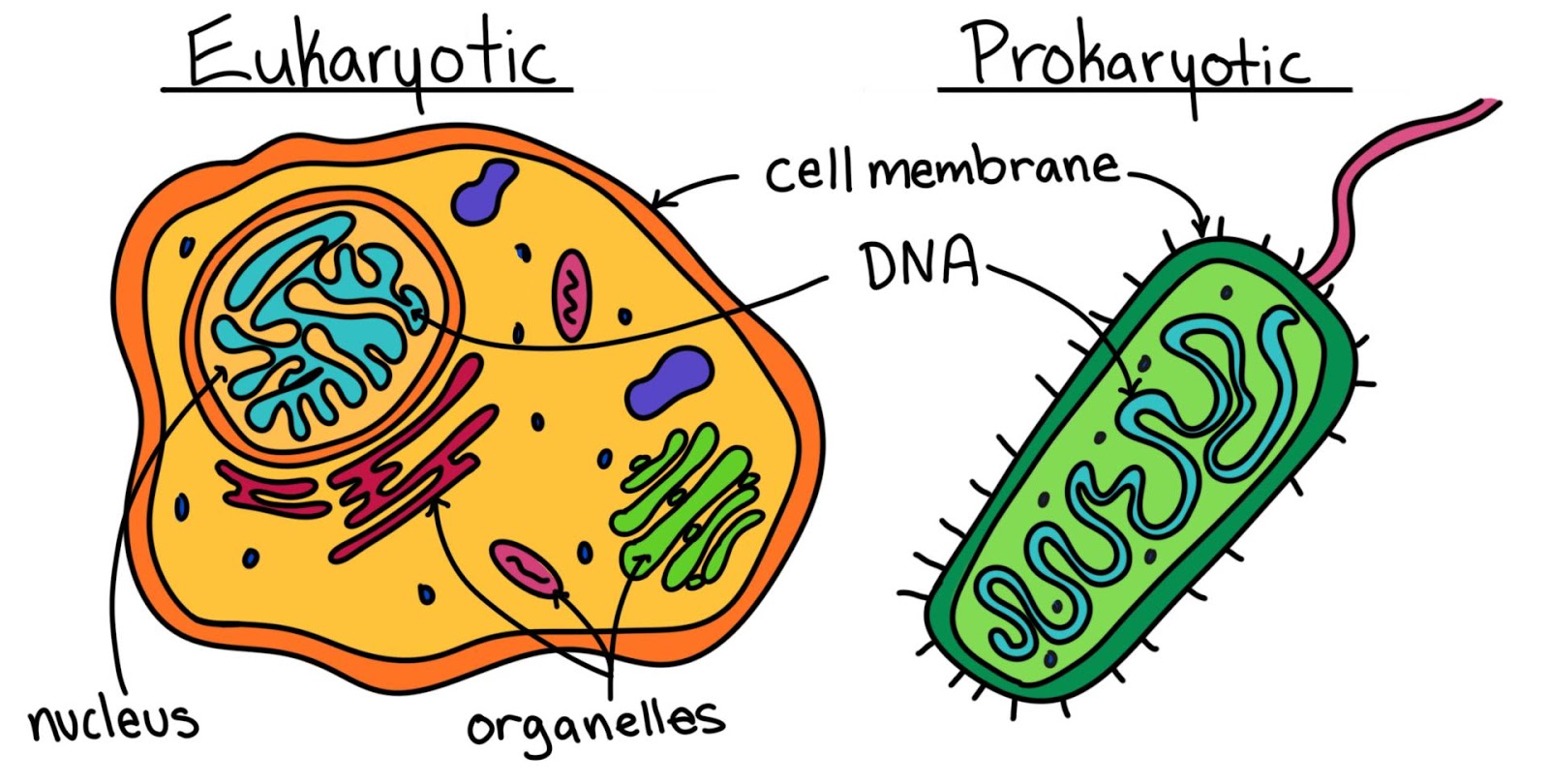
Bilingual Year 6 What are the different type of cells?
Eukaryotic cells have a true nucleus, which means the cell's DNA is surrounded by a membrane. Therefore, the nucleus houses the cell's DNA and directs the synthesis of proteins and ribosomes, the cellular organelles responsible for protein synthesis. The nuclear envelope is a double-membrane structure that constitutes the outermost portion.
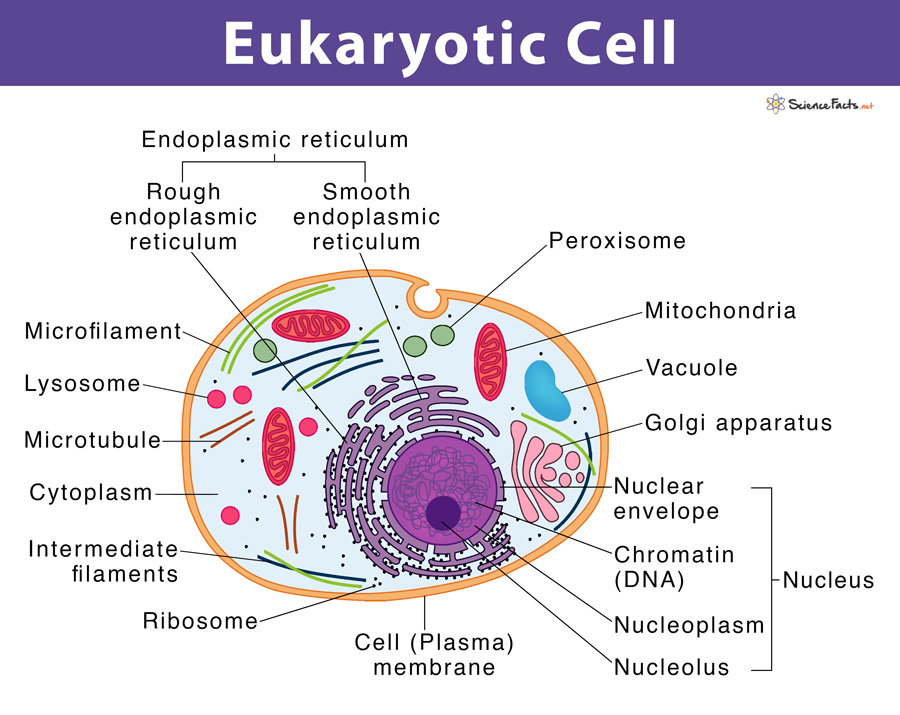
Eukaryotic Cells Definition Eukaryotic Cell Diagram Parts Structure
The Plasma Membrane. Like prokaryotes, eukaryotic cells have a plasma membrane ( Figure 3.8) made up of a phospholipid bilayer with embedded proteins that separates the internal contents of the cell from its surrounding environment. A phospholipid is a lipid molecule composed of two fatty acid chains, a glycerol backbone, and a phosphate group.
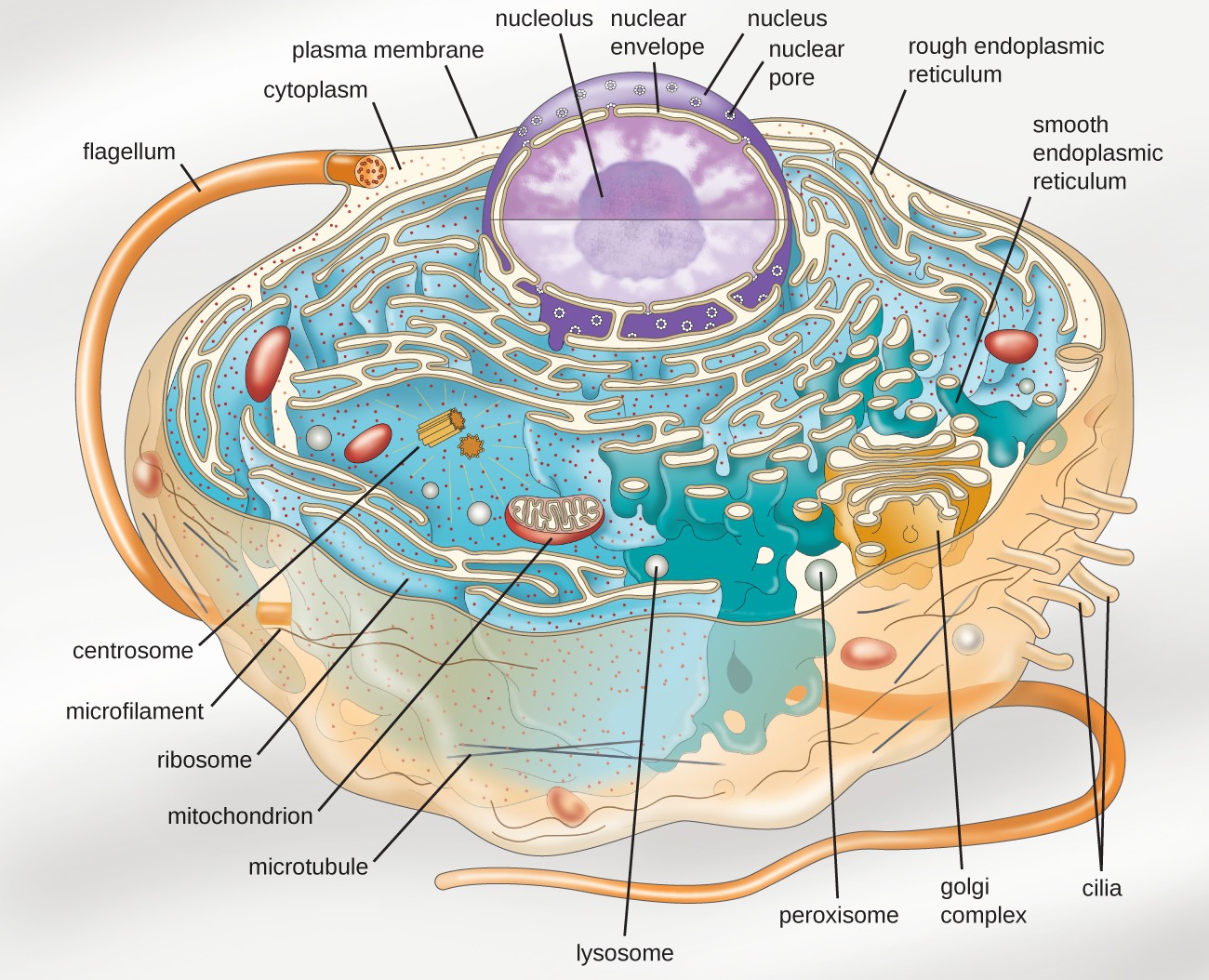
31 Identify And Label Each Part Of This Eukaryotic Cell Labels For
Unlike prokaryotic cells, eukaryotic cells have: 1) a membrane-bound nucleus; 2) numerous membrane-bound organelles such as the endoplasmic reticulum, Golgi apparatus, chloroplasts, mitochondria, and others; and 3) several, rod-shaped chromosomes. Because a membrane surrounds eukaryotic cell's nucleus, it has a "true nucleus."

2.2 Prokaryotic and Eukaryotic Cells Biology LibreTexts
Definition A eukaryotic cell contains membrane-bound organelles such as a nucleus, mitochondria, and an endoplasmic reticulum. Organisms based on the eukaryotic cell include protozoa, fungi, plants, and animals. These organisms are grouped into the biological domain Eukaryota.
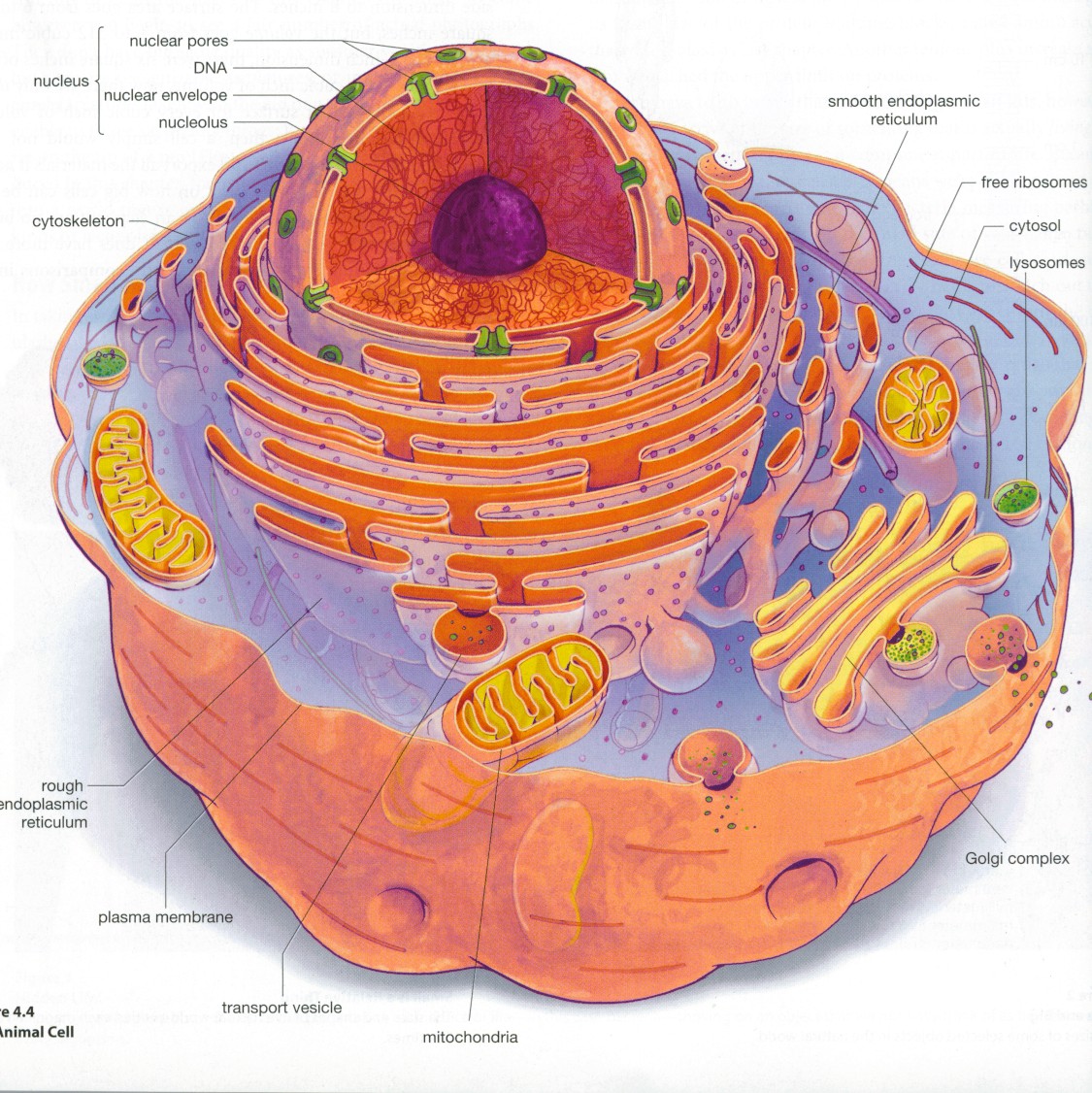
Eukaryotic cell structure diagrams Biological Science Picture
What are the key features of eukaryotic cells? Unlike prokaryotic cells, eukaryotic cells have: A membrane-bound nucleus, a central cavity surrounded by membrane that houses the cell's genetic material. A number of membrane-bound organelles, compartments with specialized functions that float in the cytosol.

Share 73+ eukaryotic cell sketch latest seven.edu.vn
By definition, eukaryotic cells are cells that contain a membrane-bound nucleus, a structural feature that is not present in bacterial or archaeal cells. In addition to the nucleus, eukaryotic cells are characterized by numerous membrane-bound organelles such as the endoplasmic reticulum, Golgi apparatus, chloroplasts, mitochondria, and others.

Eukaryotic Cells The Cell MCAT Biology Review
. Cells of animals, plants and fungi are called eukaryotic cells . Comparing cell types A group of organisms called Archaea are also prokaryotic. Next page Plant and animal cells Previous.
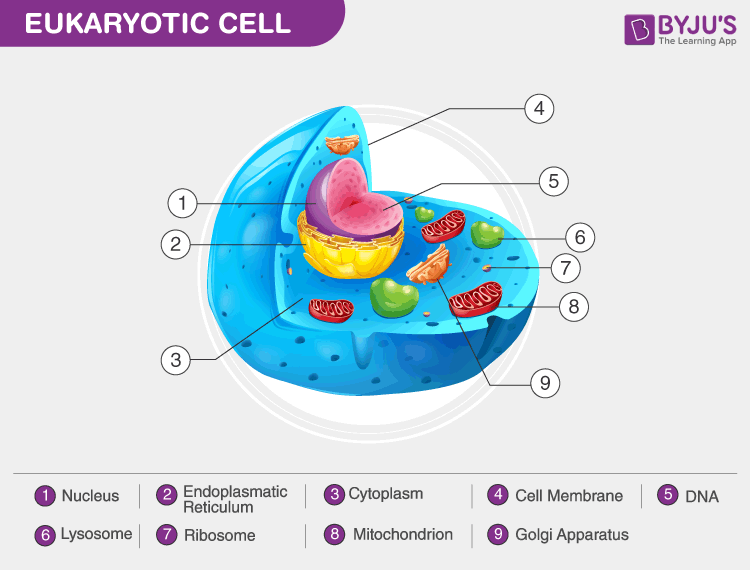
Eukaryotic Cells Definition, Characteristics, Structure, & Examples
1. The Plasma Membrane 2. The Cytoplasm 3. The Cytoskeleton 4. The Nucleus 5. The Endoplasmic Reticulum 6. The Golgi Apparatus 7. Lysosomes 8. Vesicles and Vacuoles 9. Ribosomes 10. Mitochondria 11. Peroxisomes 12. Plastids 13. Cilia and Flagella Animal Cells versus Plant Cells

Eukaryotic Cell Diagram
An organelle (think of it as a cell's internal organ) is a membrane bound structure found within a cell. Just like cells have membranes to hold everything in, these mini-organs are also bound in a double layer of phospholipids to insulate their little compartments within the larger cells.